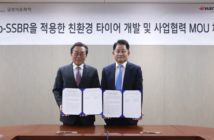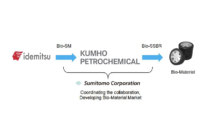Claudio Bianchetti, commercial tire development – LRR segment at Bridgestone, discusses the evolving needs of the commercial vehicle tire market
Over the course of the past five years, the commercial vehicle tire market has evolved quickly, especially as a consequence of new regulations and the introduction of digital technologies in logistics business management.
Fleets are handling their operations more and more so using advanced management software, which enables them to control the influence of the tire’s performance on their business.
Bridgestone has developed different solutions to help fleets maximize the health of their vehicles – such as the recently launched FleetPulse digital maintenance solution. FleetPulse is a three-in-one solution composed of a mobile app, a centralized website and TPMS hardware.
Big fleets are also starting to become aware of the potential impact on fuel savings made possible by using low rolling resistance tires. In addition, the introduction of the VECTO (Vehicle Energy Consumption Calculation Tool) regulation, which will come into place in 2019, to certify CO2 emissions of a new vehicle, clearly underlines the importance of tires with low RR in reducing vehicle emissions.
Therefore, there is a strong request from the big truck OEMs for specs with the lowest RR value possible. We have also observed the introduction of the first incentive programs related to low RR tires (ie. the De Minimis regulation in Germany), which encourages fleets to choose eco-friendly tires.
Looking to the near future, we expect that three main topics will have a clear impact on tire design.
Firstly, platooning (semi-autonomous driving) technology is now almost ready to be deployed on highways and we expect it to be introduced in the market within the next five years. Trucks will drive close together so it will be key to deliver excellent braking capabilities, especially in wet conditions. Driving periods will be extended and the airflow of the tires will be reduced, so highly durable tires will be even more important. A tire failure will cause a convoy to slow down, so tire solutions enabling extended mobility (ie. run-flat technology) could be a plus to compete in this segment.
Electric powertrains will also be introduced in the segment, especially in city transportation (low speed, short trips) such as buses, delivery vans and waste collectors. As such we expect that tires will need to be low noise (especially important for night time delivery), low rolling resistance to ensure greater vehicle range, and have the ability to cope in high torque conditions imposed by the electric powertrain.
The introduction of connectivity and sensing tires will enable a consistent improvement in the user experience and vehicle safety. We expect that through the introduction of sensors in the tires it will be possible to enhance fleet management by enabling predictive tire/vehicle maintenance and improving safety through real time communication of the tire sensors and vehicle AI.




